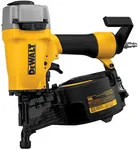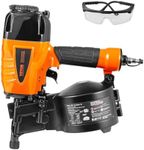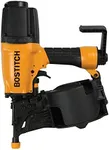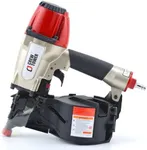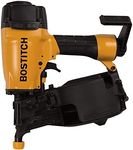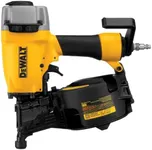Buying Guide for the Best Siding Nailers
Choosing the right siding nailer can make your home improvement projects much easier and more efficient. Siding nailers are specialized tools designed to drive nails into siding materials, ensuring they are securely attached to the structure. When selecting a siding nailer, it's important to consider several key specifications to ensure you get the best tool for your needs. Understanding these specs will help you make an informed decision and choose a siding nailer that matches your project requirements and personal preferences.Power SourceThe power source of a siding nailer determines how the tool operates. There are two main types: pneumatic (air-powered) and cordless (battery-powered). Pneumatic nailers are connected to an air compressor and are known for their consistent power and reliability, making them ideal for heavy-duty projects. Cordless nailers offer more mobility and convenience since they don't require an air hose, but they may not be as powerful as pneumatic models. Choose a pneumatic nailer if you have access to an air compressor and need consistent power for large projects. Opt for a cordless nailer if you prioritize mobility and ease of use for smaller or more remote jobs.
Nail Size CompatibilityNail size compatibility refers to the range of nail lengths and diameters that the siding nailer can handle. This is important because different siding materials and thicknesses require different nail sizes. Siding nailers typically accommodate nails ranging from 1-1/4 inches to 2-1/2 inches in length. For thicker or harder materials, longer nails are necessary to ensure a secure hold. For thinner or softer materials, shorter nails may be sufficient. Consider the type of siding you will be working with and choose a nailer that supports the appropriate nail sizes for your projects.
Magazine CapacityThe magazine capacity of a siding nailer indicates how many nails the tool can hold at once. A larger magazine capacity means fewer reloads, which can save time and increase efficiency during your project. Magazine capacities can vary, with some nailers holding as few as 50 nails and others holding over 300. If you are working on a large project or prefer fewer interruptions, choose a nailer with a higher magazine capacity. For smaller projects or occasional use, a lower capacity may be sufficient.
Weight and ErgonomicsThe weight and ergonomics of a siding nailer affect how comfortable and easy it is to use. Heavier nailers can be more tiring to operate, especially for extended periods, while lighter models are easier to handle and maneuver. Ergonomics refers to the design of the tool, including the grip and balance, which can impact user comfort and control. If you plan to use the nailer for long durations or have limited strength, look for a lightweight model with ergonomic features such as a comfortable grip and well-balanced design. This will help reduce fatigue and improve overall usability.
Depth AdjustmentDepth adjustment allows you to control how deep the nails are driven into the siding material. This is important for achieving a professional finish and ensuring the nails are properly set without damaging the material. Some siding nailers offer tool-free depth adjustment, making it easy to change settings on the fly. Others may require tools for adjustment, which can be less convenient. If you need precise control over nail depth for different materials or project requirements, choose a nailer with an easy-to-use depth adjustment feature.
Jam Clearing MechanismA jam clearing mechanism is a feature that allows you to quickly and easily clear nail jams from the siding nailer. Nail jams can occur occasionally and can interrupt your workflow. Having a tool with a convenient jam clearing mechanism can save time and frustration. Some nailers have tool-free jam clearing, which allows you to resolve jams without additional tools. If you want to minimize downtime and keep your project running smoothly, look for a siding nailer with an efficient jam clearing mechanism.


